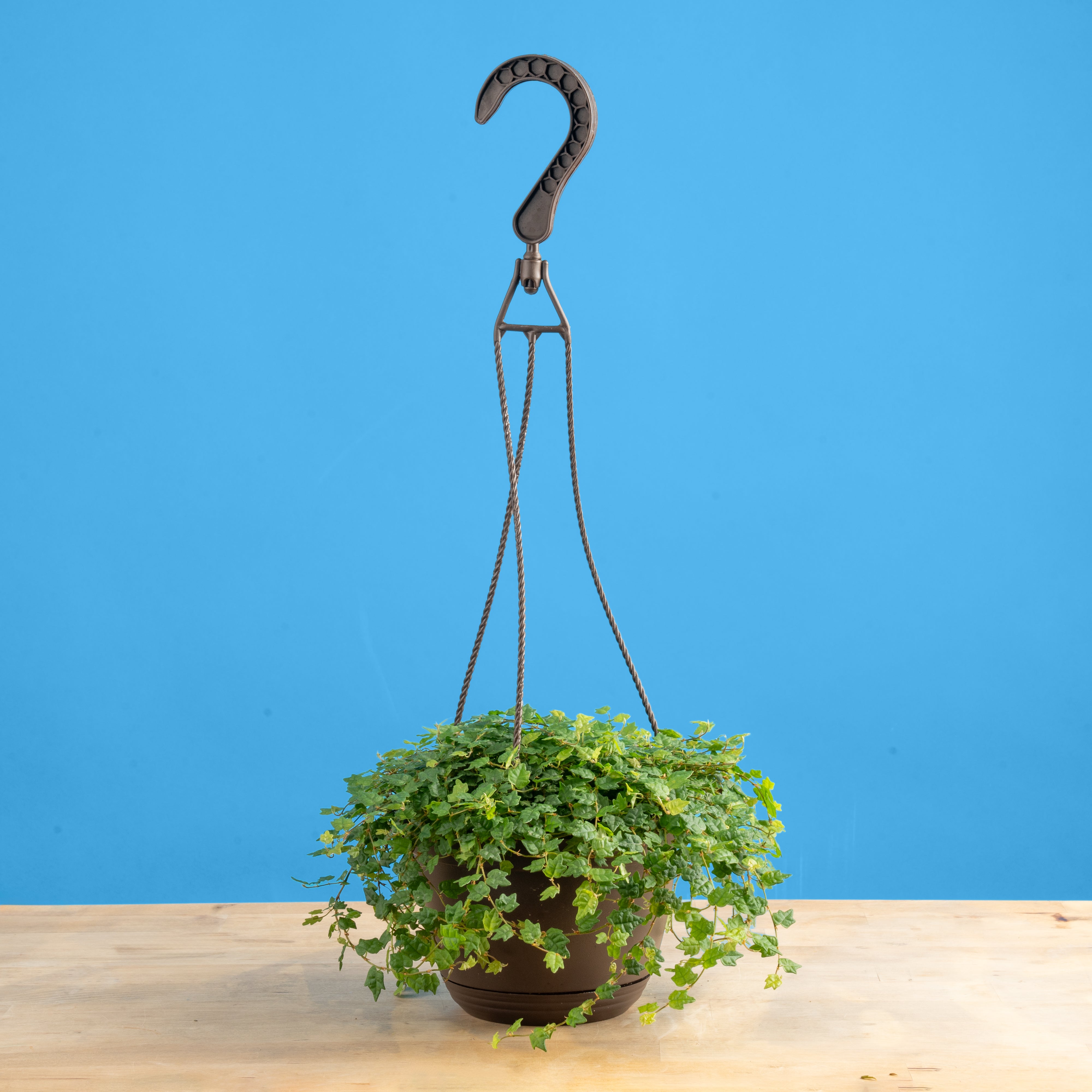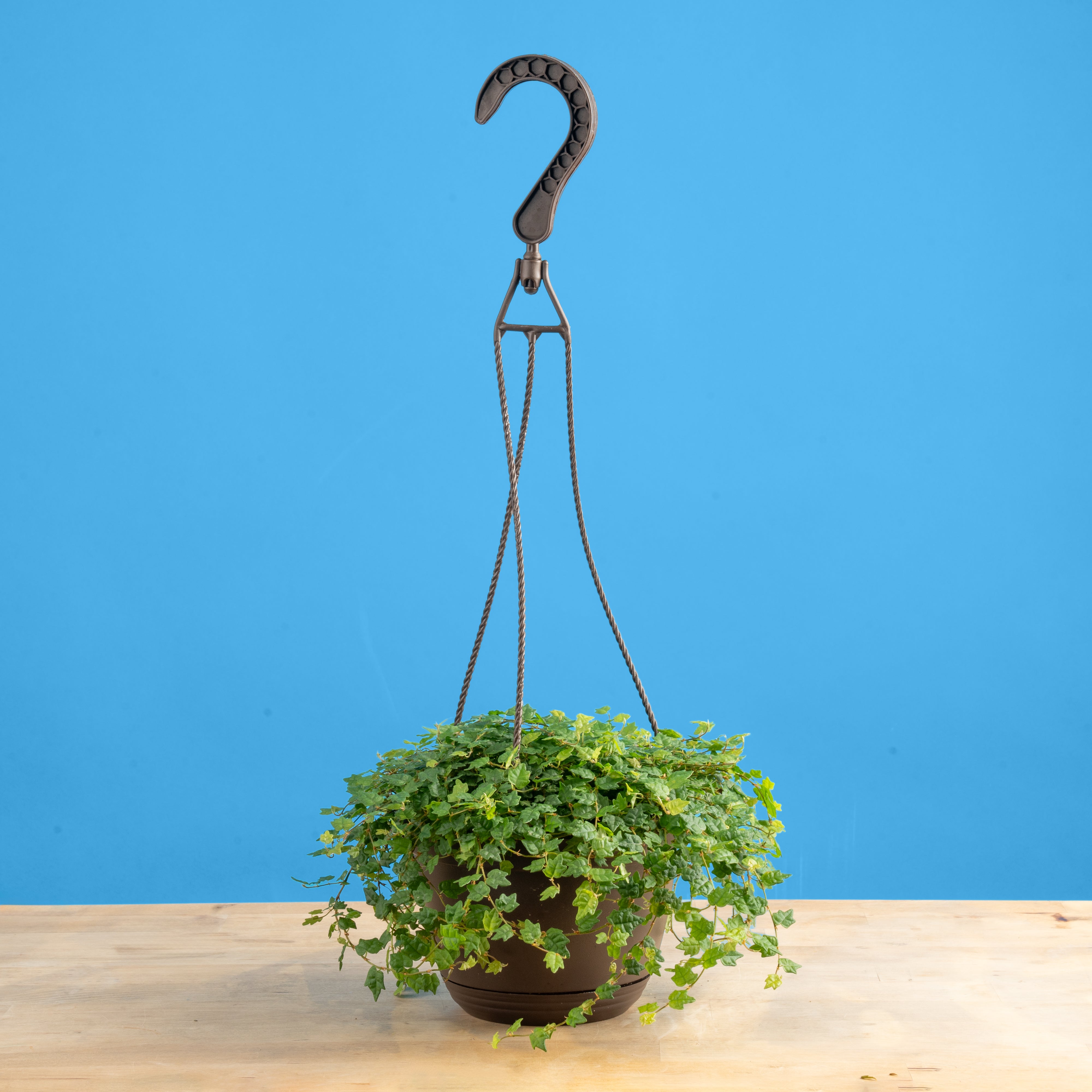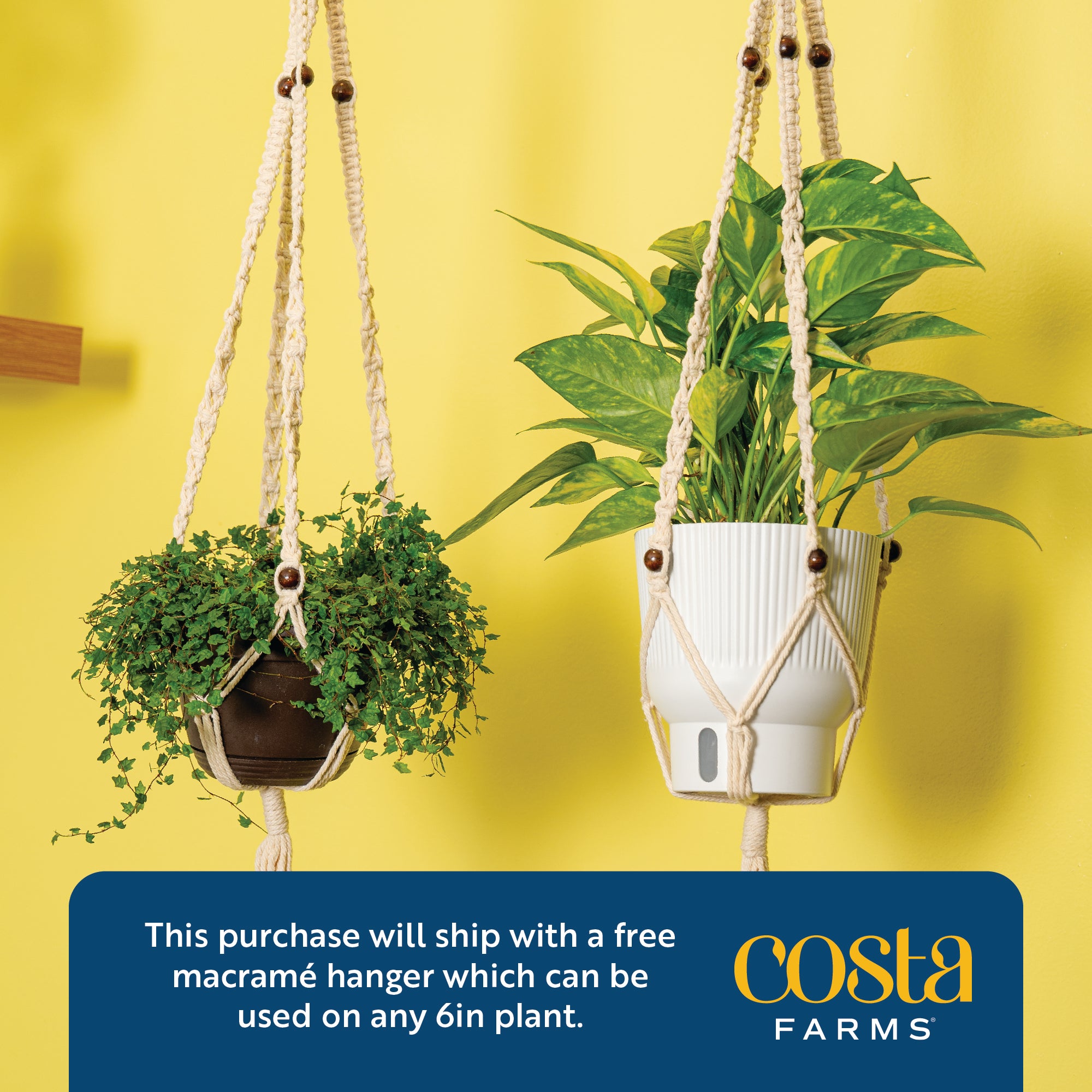Ficus String of Frogs
-
Detail
Trailing houseplants with interesting leaf shapes are all the rage! We’re pleased to bring you hard-to-find String of Frogs (Ficus pumila Quercifolia). It shows off a mass of small (1/2-inch-wide), finely textured, frog-shaped leaves. If you grow it in basket or up on a shelf, the stems will gracefully trail down. But you can also enjoy this houseplant as a groundcover planted with houseplant trees or in terrariums. No matter where you grow it, you’ll be sure to enjoy its unique beauty.
This hard-to-find houseplant is grown and shipped fresh on our family-run farm directly to you. The price includes shipping/handling, as well as a heat pack (if needed) in the winter months.
- Climbing/trailing plant grown in a 6.6-inch-wide hanging basket
- Can climb/trail more than 4 feet over time
- Beautiful texture creates a carpet of small, lush green leaves in terrariums
[bio]
Plant Bio
Ficus pumila Quercifolia
String of Frogs is a variety of Creeping Fig (Ficus pumila, also known as Ficus repens), which is native to areas of China and Japan. While it has similar care needs to traditional Creeping Fig, it has a distinct appearance with many tiny, frog-shaped leaves. It’s also noticeably slower-growing than regular Creeping Fig as a houseplant.
Grow this small houseplant in a medium to bright spot for best plant performance. Ideally, this is within 2 to 3 feet of an unobstructed east- or west-facing window (or the equivalent if you use plant lights). Water her as the top 10 to 25 percent or so of the potting mix dries to the touch; String of Frogs isn’t as drought tolerant as many other common houseplants. That said, do take care to avoid overwatering. It thrives in average to above-average household temperatures; keep it above 55F for best results. Average to above-average relative humidity levels are preferred. You may with to augment low humidity conditions to keep it looking its best.
Note: This plant may have some natural degree of toxicity and may cause discomfort or illness if ingested. Additionally, exposure to the sap of this plant may cause discomfort to individuals with a sensitivity to it upon contact. Grown for ornamental purposes and not intended for human or animal consumption.
-
Customer ReviewsNo comments







